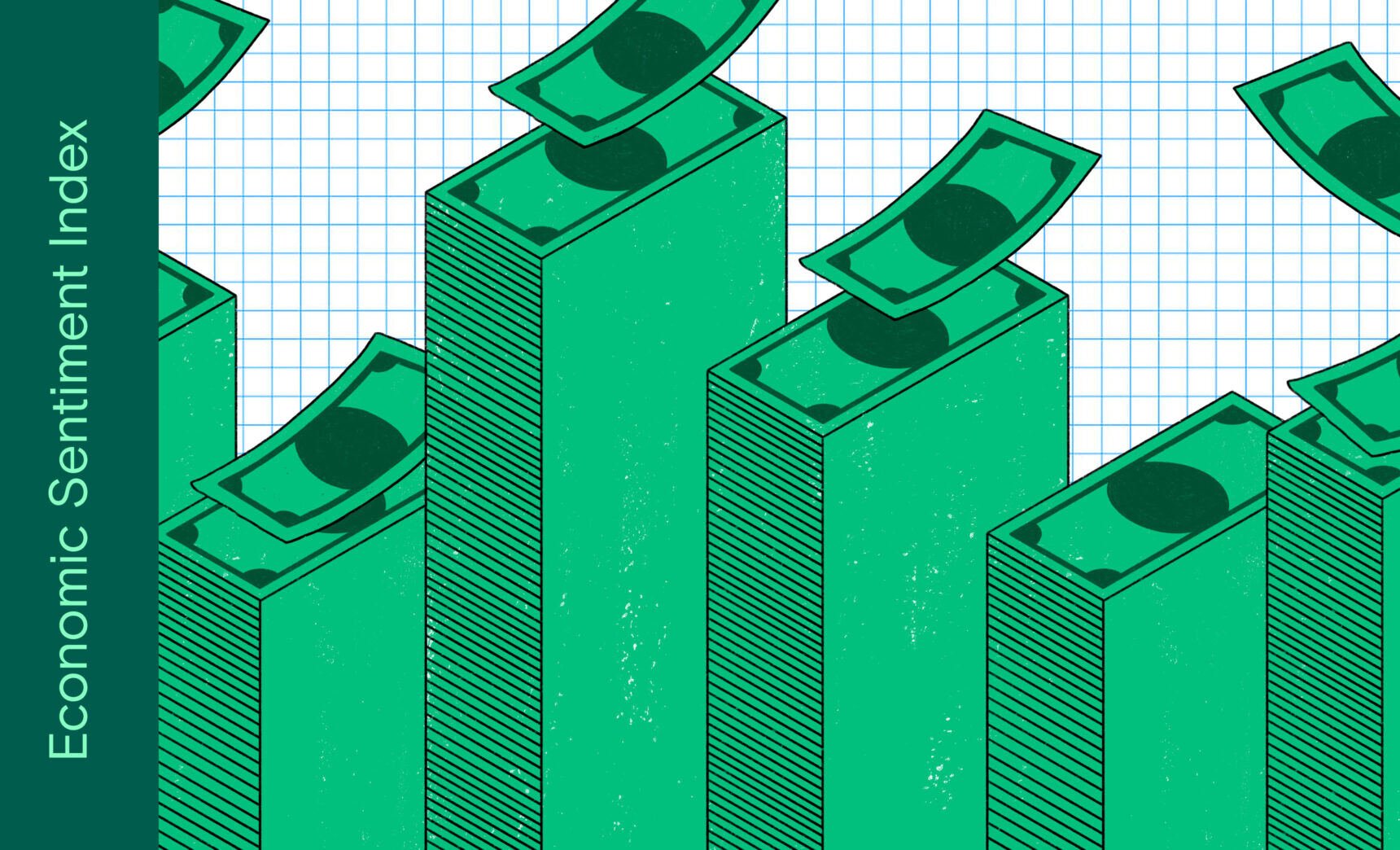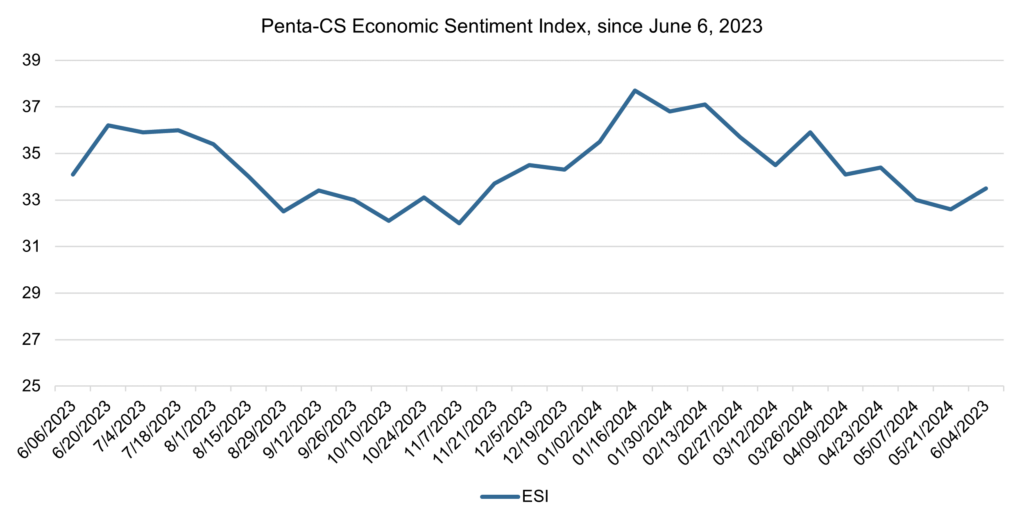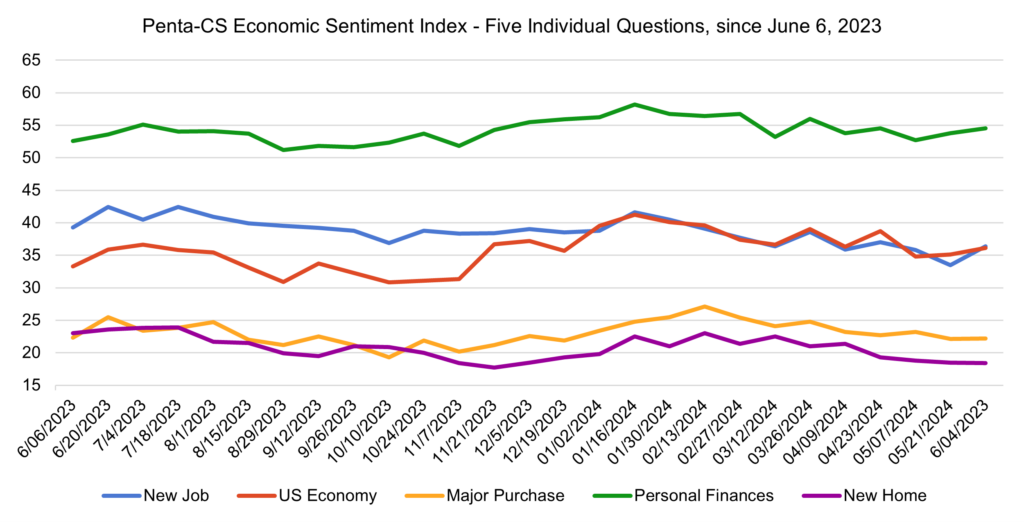Economic sentiment sees largest increase since March

Economic sentiment increased over the last two weeks, breaking the downward trend observed over the last three cycles. The Penta-CivicScience Economic Sentiment Index (ESI) rose 0.9 points to 33.5.

Four of the ESI’s five indicators increased over the past two weeks. Confidence in finding a new job increased the most, rising 2.9 points to 36.4.
—Confidence in the overall U.S. economy increased 1.0 points to 36.1.
—Confidence in personal finances increased 0.7 points to 54.5.
—Confidence in making a major purchase increased 0.1 points to 22.2.
—Confidence in buying a new home decreased 0.1 points to 18.4.
After an increase in unemployment benefits claims in May, claims declined over the last few weeks. Additionally, the U.S. economy is forecasted to have added 190,000 jobs in May. The unemployment rate is expected to remain unchanged at 3.9%.
However, a closer look reveals that not everyone is benefiting equally from the resilient jobs market. Particularly, data from the Bureau of Labor Statistics shows the unemployment rate for bachelor’s degree recipients is above 12% for recent college graduates between the ages of 20 and 29. This represents an increase of nearly four percentage points from last year.
The Commerce Department downgraded its estimate for U.S. economic growth to 1.3% for Q1, the weakest quarterly rate since the spring of 2022. The slower growth is primarily driven by two factors that often fluctuate from quarter to quarter—a surge in imports and a reduction in business inventories. A more impactful component of growth accounting for nearly 70% of economic growth, consumer spending, rose at a 2% annual rate.
The Bureau of Labor Statistics reported on May 31 that personal consumption expenditures, excluding volatile food and energy prices, increased by 0.2% in April. This represents a slight deceleration from February and March, where the metric increased by 0.3%. This disinflation, while slight, is still a positive sign from “the Fed’s preferred [inflation] gauge.”
While housing prices remain high, supply has increased across the nation, with 90% of major housing markets in the U.S. seeing more homes for sale in April than at the same time last year, according to a report by ICE Mortgage Technology.

The ESI’s three-day moving average began this two-week stretch at 32.5 on May 22. It rose to 35.1 on May 24, then fell before rising again to a peak of 35.2 on May 28. The three-day moving average then trended downward to a low of 31.2 on June 2 before rising to 32.9 on June 4 to close out the session.

The next release of the ESI will be Wednesday, June 19, 2024.